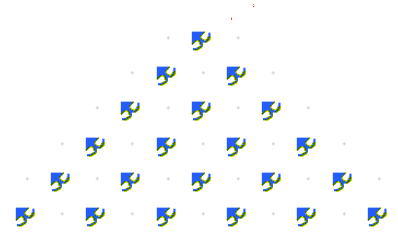Challenge: build a Voting Machine: Three bits are set, each to the left or right, indicating three independent votes. After one lever is pressed (and perhaps other balls triggered), somehow on the board it is indicated whether the majority are for the left party, or the right party. Extra points if one or more of the following are satisfied:
- After your machine is run, the original votes can still be seen (in case a recount is needed). This might make it more cumbersome though.
- Your solution can fit on the physical board with the supplied parts.
- Only one ball is needed.
- Your machine is ready before November 6, and can’t be hacked by foreign agents.

Edit - I don’t think this is too hard, though it did take me several iterations to get something that would both nondestructively read the votes, and fit on the original board. (I originally had two different solutions, each with only one of those features.) It uses just one ball.
 .
.